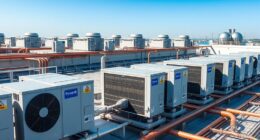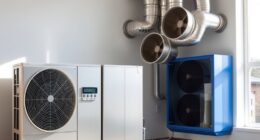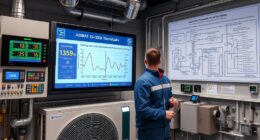Curious about how much money you can save with heat pumps? Look no further!
In this article, we will dive deep into the data and explore the practicality of heat pumps as an energy-efficient solution. We’ll evaluate the potential fuel cost savings, calculate long-term energy bill savings, and assess the return on investment.
But that’s not all – we’ll also consider the environmental benefits, maintenance expenses, and compare heat pumps to other systems.
Get ready to master the art of saving with heat pumps!

Key Takeaways
- Heat pumps offer significant long-term savings on energy bills
- Heat pumps significantly reduce greenhouse gas emissions compared to traditional heating systems
- Heat pumps provide a cost-effective option for homeowners, with a significant return on investment
- Heat pumps contribute to a more sustainable and environmentally friendly heating solution, especially when paired with renewable energy sources like solar or wind power.
Understanding the Energy Efficiency of Heat Pumps
Let’s break down the energy efficiency of heat pumps and see how much savings they can truly bring. When it comes to evaluating the performance of heat pumps, there are a few key factors to consider.
One important metric is the Coefficient of Performance (COP), which measures the ratio of heat output to the amount of electrical energy input. A higher COP indicates greater energy efficiency and potential cost savings.
Additionally, it’s essential to consider the Seasonal Energy Efficiency Ratio (SEER) and Heating Seasonal Performance Factor (HSPF), which provide a comprehensive evaluation of a heat pump’s efficiency over the course of a year.
Evaluating the Potential Fuel Cost Savings With Heat Pumps
When evaluating the potential fuel cost savings with heat pumps, we can determine the most efficient and cost-effective option for homeowners. To fully understand the potential savings, it’s important to consider the following:

Evaluating installation costs: While heat pumps may have higher upfront costs compared to traditional heating systems, they can provide significant long-term savings on energy bills. It’s essential to evaluate the installation costs and compare them to the expected savings over time.
Comparing heat pump performance: Different heat pump models have varying levels of performance and efficiency. By comparing the performance ratings, such as the Coefficient of Performance (COP) and Heating Seasonal Performance Factor (HSPF), homeowners can choose the most efficient heat pump that will maximize their fuel cost savings.
Considering the local climate: The climate plays a crucial role in the performance of heat pumps. It’s important to consider the local climate conditions and choose a heat pump that’s suitable for the specific region. This will ensure optimal performance and maximize fuel cost savings.
Calculating the Long-Term Savings on Energy Bills
To accurately assess the long-term savings on energy bills, we must calculate the potential cost reductions and compare them to the initial investment in heat pump installation. Evaluating energy consumption is crucial in this process. By comparing the energy usage before and after installing a heat pump, we can determine the actual savings.

It’s important to consider the energy prices as well. If the cost of energy increases over time, the savings from a heat pump will be even more significant. Comparing energy prices from different sources, such as gas, oil, and electricity, is essential to make an informed decision.
Additionally, it’s advisable to factor in any available financial incentives or tax credits that can further reduce the initial investment.
Exploring the Environmental Benefits of Heat Pumps
We can explore the environmental benefits of heat pumps by understanding their ability to significantly reduce greenhouse gas emissions. Evaluating the environmental impact of heat pumps reveals their potential to make a substantial difference in reducing carbon footprints. Here are three key benefits of heat pumps:
Lower carbon emissions: Heat pumps operate by transferring heat from one location to another, rather than burning fossil fuels to generate heat. This results in a significant reduction in greenhouse gas emissions compared to traditional heating systems.
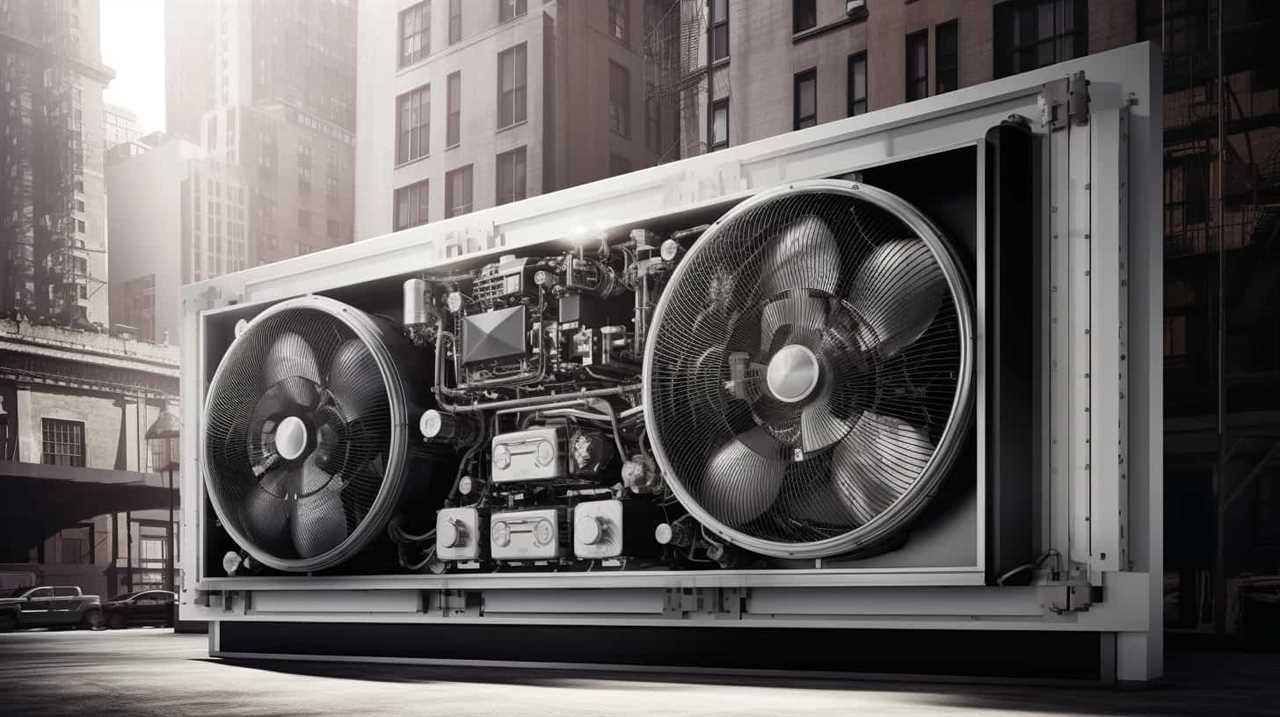
Energy efficiency: Heat pumps are highly efficient, converting a single unit of electricity into multiple units of heat energy. This translates to lower energy consumption and further reduces the carbon footprint associated with heating.
Renewable energy compatibility: Heat pumps can be powered by renewable energy sources such as solar or wind power. By utilizing clean energy, heat pumps contribute to a more sustainable and environmentally friendly heating solution.
Understanding the environmental benefits of heat pumps sets the stage for assessing the return on investment for heat pump installation.
Assessing the Return on Investment for Heat Pump Installation
Our analysis shows that installing a heat pump can provide a significant return on investment, as well as long-term savings on energy costs. When assessing the return on investment for heat pump installation, it is important to consider both the installation costs and the potential energy savings. Evaluating energy consumption is crucial in determining the payback period and the overall financial benefits of installing a heat pump. To illustrate this, we have prepared a table showcasing the average installation costs and potential annual energy savings for different types of heat pumps:

| Heat Pump Type | Installation Cost | Annual Energy Savings |
|---|---|---|
| Air Source | $5,000 | $800 |
| Ground Source | $10,000 | $1,200 |
| Hybrid | $8,000 | $1,000 |
| Ductless Mini-Split | $4,000 | $600 |
| Geothermal | $15,000 | $1,500 |
As seen in the table, the installation costs vary depending on the type of heat pump. However, the potential annual energy savings outweigh the initial investment, resulting in a favorable return on investment. Transitioning towards the next section, it is important to factor in maintenance expenses and savings to have a comprehensive understanding of the financial implications of heat pump installation.
Factoring in Maintenance Expenses and Savings
When considering the financial implications of heat pump installation, it’s crucial to factor in both the maintenance expenses and the potential savings.
Proper maintenance is essential for ensuring the longevity and efficiency of your heat pump. Regular maintenance, such as filter replacement and system cleaning, can help prevent costly repairs and keep your heat pump running smoothly. Additionally, investing in routine maintenance can help optimize energy consumption, leading to greater savings on your energy bills. By keeping your heat pump well-maintained, you can ensure that it operates at peak efficiency, minimizing energy wastage and maximizing cost savings.
It’s important to consider these maintenance costs and potential savings when evaluating the overall financial impact of heat pump installation.

Next, let’s explore how heat pumps compare to other heating and cooling systems.
Comparing Heat Pumps to Other Heating and Cooling Systems
Interestingly, while heat pumps offer numerous benefits, they do have some key differences when compared to other heating and cooling systems. When evaluating the performance of heat pumps, it’s important to consider their energy efficiency and ability to provide both heating and cooling.
Heat pumps are known for their high efficiency, as they transfer heat rather than generate it. This can result in significant savings on energy bills compared to traditional systems like furnaces or air conditioners. However, it’s also important to consider the upfront cost of heat pump installation, which can be higher than other systems. It’s crucial to carefully evaluate the cost comparisons between heat pumps and alternative systems to determine the long-term savings potential.
Additionally, factors such as climate, insulation, and the size and layout of the building should be taken into account when comparing different heating and cooling options.

Analyzing the Impact of Government Incentives on Savings
When it comes to analyzing the impact of government incentives on savings, there are a few key points to consider.
Firstly, we need to evaluate the effectiveness of these incentives in encouraging the adoption of heat pumps. Are they providing enough financial support to make the upfront costs more affordable?
Secondly, we should assess the potential savings that can be achieved through these incentives. Are they substantial enough to make investing in a heat pump worthwhile for consumers?
Lastly, it’s important to examine the impact of government incentives on consumer behavior. Are these incentives successfully driving a shift towards more energy-efficient heating and cooling systems?

Government Incentives: Effectiveness
We believe that government incentives can have a significant impact on the savings achieved through heat pumps. Evaluating the effectiveness of these incentives and understanding their impact on consumers is crucial in determining their value. Here are three key points to consider:
Financial incentives: Government programs often provide financial incentives such as tax credits or rebates to encourage the adoption of heat pumps. These incentives can help offset the initial costs and make heat pump installations more affordable for consumers.
Energy efficiency standards: Many governments set energy efficiency standards for heat pumps, incentivizing manufacturers to produce more energy-efficient models. These standards not only promote sustainable practices but also help consumers save on energy costs in the long run.
Education and awareness: Government incentives often come with educational campaigns to raise awareness about the benefits of heat pumps. By providing information and resources, governments can empower consumers to make informed decisions and maximize their savings.

Considering the impact of government incentives, it’s essential to assess the potential savings of heat pumps to determine if they’re worth the investment.
Potential Savings: Worth It
To truly assess the worth of potential savings, we must consider the impact of government incentives on the adoption and utilization of heat pumps. These incentives play a crucial role in encouraging homeowners to invest in this energy-efficient technology. By offering financial assistance, such as tax credits or rebates, governments aim to offset the high upfront costs associated with heat pump installation.
To understand the potential savings, it is essential to evaluate the financial considerations and potential drawbacks of heat pump systems. While the long-term energy savings can be significant, there are upfront expenses to consider, including the cost of purchasing and installing the heat pump. Additionally, some homeowners may experience higher electricity bills during extreme weather conditions when the heat pump works harder to maintain indoor comfort.
To help you better understand the financial implications of heat pump adoption, let’s take a closer look at the potential savings and considerations:

| Potential Savings | Financial Considerations |
|---|---|
| Lower Energy Costs | Upfront Installation Costs |
| Reduced Maintenance | Increased Electricity Bills during Extreme Weather |
| Increased Home Value | Potential Drawbacks |
Impact on Consumer Behavior?
By taking advantage of government incentives, we can maximize our savings through the adoption of heat pumps. These incentives play a crucial role in influencing consumer behavior and encouraging the adoption of energy-efficient technologies.
Here are three ways in which government incentives impact consumer perception and drive behavioral changes:
Financial incentives: Government programs often provide financial incentives such as tax credits or rebates for installing heat pumps. This helps consumers overcome the initial cost barrier and makes heat pumps a more attractive option.
Information dissemination: Government initiatives also focus on educating consumers about the benefits of heat pumps and energy efficiency. This increased awareness helps consumers make informed decisions and understand the long-term savings potential of heat pumps.

Market transformation: Government incentives drive market transformation by creating a demand for energy-efficient technologies. This leads to increased competition among manufacturers and ultimately lowers the cost of heat pumps, making them more accessible to a wider range of consumers.
Through these initiatives, government incentives have a significant impact on consumer behavior, driving the adoption of heat pumps and maximizing savings potential.
Considering the Future Cost Savings of Heat Pump Technology
When considering the future cost savings of heat pump technology, there are two key points to consider.
First, heat pumps offer long-term cost benefits by reducing energy consumption and lowering utility bills. This is especially true when compared to traditional heating and cooling systems.
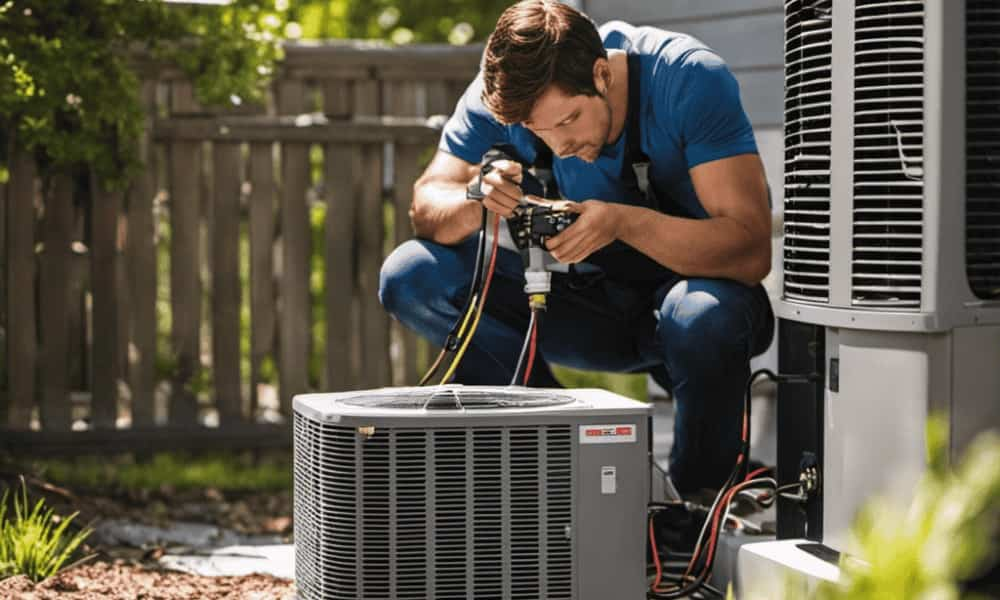
Second, heat pumps are known for their energy efficiency advantages, as they use renewable energy sources such as air or ground heat to provide heating and cooling. This not only reduces carbon emissions but also contributes to a more sustainable and eco-friendly future.
Long-Term Cost Benefits
We can calculate the long-term cost benefits of heat pump technology by considering the future cost savings. When evaluating the long term financial benefits of heat pumps, it becomes clear that they offer significant economic advantages. Here are three key factors to consider:
Energy Efficiency: Heat pumps are highly energy-efficient, meaning they consume less energy to produce the same amount of heat or cooling as traditional heating and cooling systems. This translates to lower energy bills and long-term cost savings.
Reduced Maintenance Costs: Heat pumps require less maintenance compared to other heating and cooling systems. With fewer components and simpler operation, the need for costly repairs and regular servicing is minimized, resulting in additional cost savings.
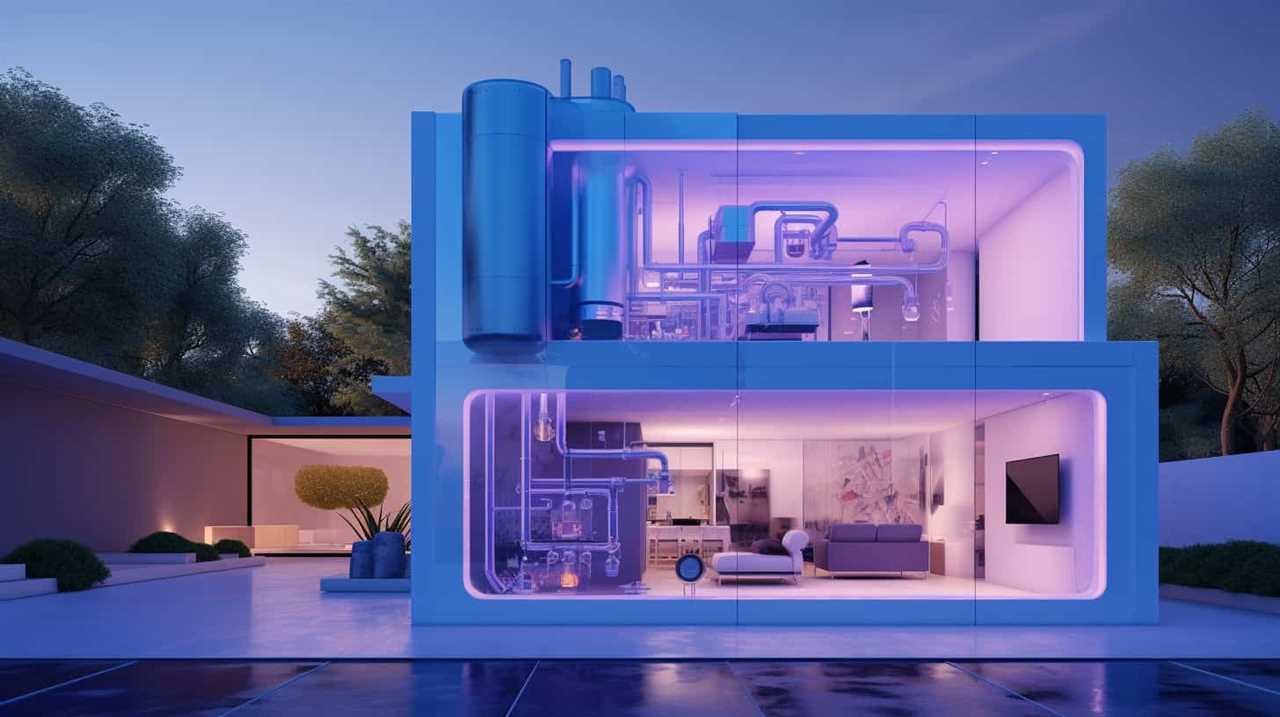
Increased Home Value: Installing a heat pump can increase the overall value of your home. Potential buyers are attracted to energy-efficient homes that offer long-term cost benefits, making your property more marketable and potentially commanding a higher selling price.
Considering these economic advantages, it’s clear that heat pump technology offers significant long-term cost benefits.
Now, let’s explore the subsequent section about the energy efficiency advantages of heat pumps.
Energy Efficiency Advantages
Let’s delve into the energy efficiency advantages and potential future cost savings of heat pump technology.

Understanding energy consumption is key to evaluating the cost effectiveness of heat pumps. Heat pumps are known for their high energy efficiency, as they use electricity to transfer heat rather than generate it. Compared to traditional heating systems, heat pumps can deliver significant energy savings. According to the U.S. Department of Energy, heat pumps can reduce electricity use for heating by up to 50%. This translates into lower energy bills and long-term cost savings for homeowners.
Additionally, heat pumps offer the benefit of dual functionality, providing both heating and cooling capabilities. This versatility further enhances their energy efficiency advantages, making them a worthwhile investment for those looking to reduce energy consumption and save money in the long run.
Frequently Asked Questions
Are Heat Pumps Suitable for All Types of Homes and Buildings?
Heat pumps are suitable for most homes and buildings. They can be installed in various types of properties, including residential and commercial. The cost of heat pump installation varies, but the potential savings make it a practical and cost-effective choice.
How Long Does It Typically Take to Recoup the Initial Investment in a Heat Pump System?
Typical payback periods for heat pump systems vary depending on factors such as the initial investment cost, energy prices, and efficiency of the system. It’s important to consider these factors when evaluating the potential savings.

Can Heat Pumps Be Used for Both Heating and Cooling Purposes?
Heat pumps are versatile systems that can be used for both heating and cooling purposes. They offer high efficiency and have a positive environmental impact. However, it’s important to consider the advantages and disadvantages of heat pumps in residential applications.
Are There Any Limitations or Drawbacks to Using Heat Pumps?
Limitations and drawbacks of heat pumps include initial high cost, required maintenance, and dependence on external temperatures. However, the savings they deliver through energy efficiency and reduced utility bills outweigh these drawbacks in the long run.
How Do Heat Pumps Compare to Traditional Heating and Cooling Systems in Terms of Energy Efficiency?
Heat pumps, compared to traditional HVAC systems, offer significant energy savings. They are more efficient in converting energy into heat or cool air. This translates to lower utility bills and reduced environmental impact.
What Are the Cost Savings of Installing Heat Pumps?
Installing heat pumps can lead to significant cost savings. By utilizing renewable energy sources in the form of air, ground, or water, heat pumps can efficiently provide heating and cooling for homes. As a result, homeowners can benefit from reduced energy consumption and lower utility bills, consequently saving money with heat pumps. Additionally, by reducing reliance on traditional heating and cooling systems, heat pumps also contribute to a greener and more sustainable environment.
Conclusion
In conclusion, heat pumps offer a multitude of savings, making them a wise investment for homeowners.

With their high energy efficiency, potential fuel cost savings, and long-term reduction in energy bills, heat pumps prove to be a practical choice.
Additionally, their environmental benefits and potential government incentives further enhance their appeal.
When considering the future cost savings and comparing them to other heating and cooling systems, it becomes clear that heat pumps are a smart and sustainable choice.






